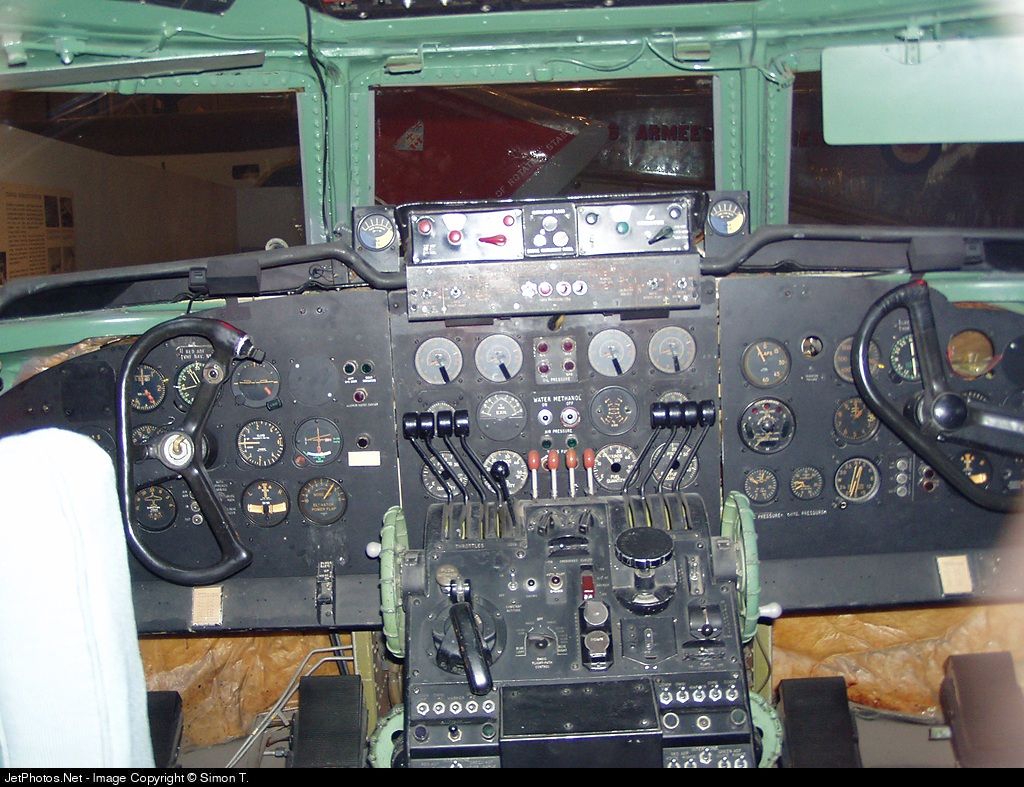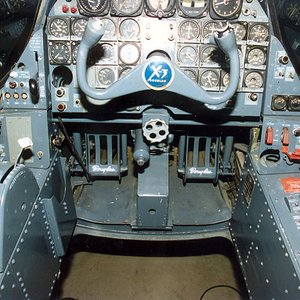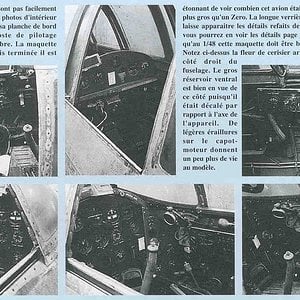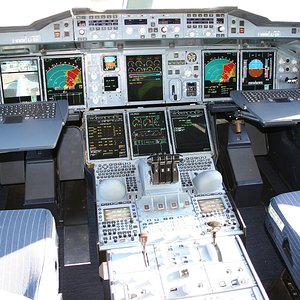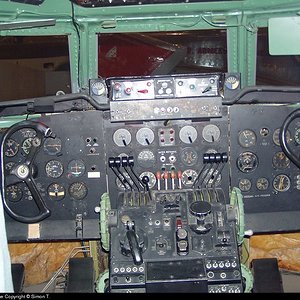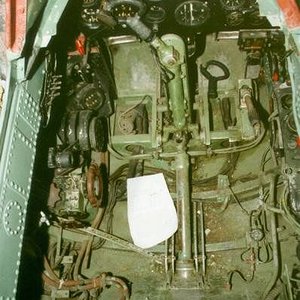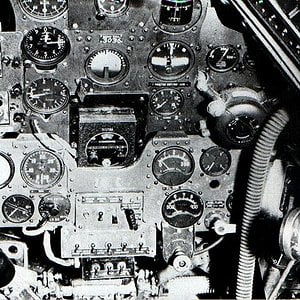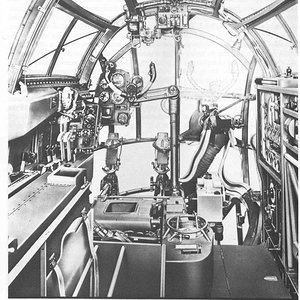Navigation
Install the app
How to install the app on iOS
Follow along with the video below to see how to install our site as a web app on your home screen.
Note: This feature may not be available in some browsers.
More options
You are using an out of date browser. It may not display this or other websites correctly.
You should upgrade or use an alternative browser.
You should upgrade or use an alternative browser.
History
[edit] Genesis
In 1945 Trans-Canada Airlines (TCA) started exploring a number of aircraft developments under the direction of Jim Bain. A. V. Roe of England had recently taken over the Victory Aircraft "shadow factory" in Toronto, and starting exploring production possibilities with TCA for a two-engine turboprop aircraft like the Vickers Viscount.[1] In the fall of 1945, Bain travelled to England to visit various aircraft companies, and during his exploration of Rolls-Royce's engine department, saw the early work on what was then known as the AJ65. The new engine, later known as the Rolls-Royce Avon, enthralled Bain and on his return to Canada he changed plans for Avro's development to use the new engine instead of turboprops.[2]
Over the next few months, the teams at TCA and Avro refined the requirements, which were signed off on 9 April 1946. They called for a 36-seat aircraft with a cruising speed of 425 miles per hour (684 km/h), a range of 1,200 miles (1,900 km), an average distance between stops of 250 miles (400 km) and longest single flight of 500 miles (800 km). The difference between the range and maximum airport distances was to allow for the required 45 minutes stacking and flight to get to a 120-mile (190-km) distant alternate airport in a 20 mph (30 km/h) headwind. The aircraft also needed to be able to operate from existing 4,000 ft (1,200 m) runways. Load was 12,700 lbs and 50 passengers.[3]
The agreement also specified a number of contractual terms that, in retrospect, appear especially odd. In spite of TCA's experience with contracting for the Ministry of Transport, and Bain's personal arguments that cost-plus contracts be used as a ward against budget overruns, TCA's contract with Avro demanded fixed prices for the entire development, as well as a fixed price for the aircraft of C$350,000. Additionally, Avro was not allowed to sell the aircraft to any other airline for three years. After that period, if a buyer paid less than C$350,000 for the aircraft, Avro would have to pay the difference to TCA. Furthermore, during the testing period of one year after the first aircraft was introduced, Avro would have to pay all costs, even if paying passengers were carried. Jack Dyment, chief of TCA's entire engineering department, suggested that Avro pay for the testing so that it would "permit us to learn how to successfully operate a jet aircraft without having to pay for such experience the hard way."[4]
[edit] Design changes
In 1947, Fred Smye, president of Avro, advised Herbert James Symington of TCA that they could not meet the fixed price contract. Symington's response was to pull out of the project, perhaps due to having successfully taken delivery of their new Canadair North Stars. C. D. Howe stepped in and offered $1.5 million to continue the project, at a slower pace.[5] At about the same time, Rolls-Royce told Avro that the civil certification of the Avon could not be guaranteed in time for the Jetliner's rollout. This, in turn, would lead to higher operational and maintenance costs. Nevertheless, Avro continued with its plan to build the jet, selecting four Rolls-Royce Derwents to replace the two Avons.[4]
Rolls-Royce Derwent Engine, used in the Avro Jetliner
Chief Designer James C. Floyd was upset by these developments, but in the end found a number of advantages of the four-engine layout. The main advantage was that an engine-out situation, the aircraft would lose only ¼ of its thrust, rather than ½, which made power tolerances easier to meet. In particular, the asymmetry in thrust originally called for a powered rudder to correct for yaw in the case of an engine-out, but with four engines it was found the yaw was so small it could be correctly easily with just the manual trim controls.[6]
Although bearing some resemblance to the Avro Tudor 8 and 9 (which spawned the experimental Avro Ashton); from the outset, Floyd's design was conceived as a commercial jet airliner.[7] The updated design was presented in October 1948, and in February 1948 TCA responded with changes of their own. Now they wanted the aircraft to cruise at 500 mph, and they increased the fuel requirements to allow for wider diversions. In April, Gordon McGregor took over the presidency of TCA, and told Smye that he did not want to be the first airline with a jet. Nevertheless, the project pressed on, and was the topic of a major article in Aviation Week that November.[6]
The aircraft was scheduled to begin deliveries in May 1952, and enter service in October,[8] which would have given it fully six years head start on the 707, which did not enter service until October 1958,[8] and more than 11 years on its top short-field competitor, the 727. Its short-field performance exceeded the Caravelle (with a comparable number of passengers).[8]
Proposals exist for 30-, 40-, and 50-seat models, as well as 52- and 64-seat paratroop versions, high-altitude medical lab, photo reconnaissance, cargo, and crew trainer types.[9] Given the difference in seat pitch at the time (compared to today), maximum capacity could readily have reached 100 even without a simple fuselage stretch.
[edit] Genesis
In 1945 Trans-Canada Airlines (TCA) started exploring a number of aircraft developments under the direction of Jim Bain. A. V. Roe of England had recently taken over the Victory Aircraft "shadow factory" in Toronto, and starting exploring production possibilities with TCA for a two-engine turboprop aircraft like the Vickers Viscount.[1] In the fall of 1945, Bain travelled to England to visit various aircraft companies, and during his exploration of Rolls-Royce's engine department, saw the early work on what was then known as the AJ65. The new engine, later known as the Rolls-Royce Avon, enthralled Bain and on his return to Canada he changed plans for Avro's development to use the new engine instead of turboprops.[2]
Over the next few months, the teams at TCA and Avro refined the requirements, which were signed off on 9 April 1946. They called for a 36-seat aircraft with a cruising speed of 425 miles per hour (684 km/h), a range of 1,200 miles (1,900 km), an average distance between stops of 250 miles (400 km) and longest single flight of 500 miles (800 km). The difference between the range and maximum airport distances was to allow for the required 45 minutes stacking and flight to get to a 120-mile (190-km) distant alternate airport in a 20 mph (30 km/h) headwind. The aircraft also needed to be able to operate from existing 4,000 ft (1,200 m) runways. Load was 12,700 lbs and 50 passengers.[3]
The agreement also specified a number of contractual terms that, in retrospect, appear especially odd. In spite of TCA's experience with contracting for the Ministry of Transport, and Bain's personal arguments that cost-plus contracts be used as a ward against budget overruns, TCA's contract with Avro demanded fixed prices for the entire development, as well as a fixed price for the aircraft of C$350,000. Additionally, Avro was not allowed to sell the aircraft to any other airline for three years. After that period, if a buyer paid less than C$350,000 for the aircraft, Avro would have to pay the difference to TCA. Furthermore, during the testing period of one year after the first aircraft was introduced, Avro would have to pay all costs, even if paying passengers were carried. Jack Dyment, chief of TCA's entire engineering department, suggested that Avro pay for the testing so that it would "permit us to learn how to successfully operate a jet aircraft without having to pay for such experience the hard way."[4]
[edit] Design changes
In 1947, Fred Smye, president of Avro, advised Herbert James Symington of TCA that they could not meet the fixed price contract. Symington's response was to pull out of the project, perhaps due to having successfully taken delivery of their new Canadair North Stars. C. D. Howe stepped in and offered $1.5 million to continue the project, at a slower pace.[5] At about the same time, Rolls-Royce told Avro that the civil certification of the Avon could not be guaranteed in time for the Jetliner's rollout. This, in turn, would lead to higher operational and maintenance costs. Nevertheless, Avro continued with its plan to build the jet, selecting four Rolls-Royce Derwents to replace the two Avons.[4]
Rolls-Royce Derwent Engine, used in the Avro Jetliner
Chief Designer James C. Floyd was upset by these developments, but in the end found a number of advantages of the four-engine layout. The main advantage was that an engine-out situation, the aircraft would lose only ¼ of its thrust, rather than ½, which made power tolerances easier to meet. In particular, the asymmetry in thrust originally called for a powered rudder to correct for yaw in the case of an engine-out, but with four engines it was found the yaw was so small it could be correctly easily with just the manual trim controls.[6]
Although bearing some resemblance to the Avro Tudor 8 and 9 (which spawned the experimental Avro Ashton); from the outset, Floyd's design was conceived as a commercial jet airliner.[7] The updated design was presented in October 1948, and in February 1948 TCA responded with changes of their own. Now they wanted the aircraft to cruise at 500 mph, and they increased the fuel requirements to allow for wider diversions. In April, Gordon McGregor took over the presidency of TCA, and told Smye that he did not want to be the first airline with a jet. Nevertheless, the project pressed on, and was the topic of a major article in Aviation Week that November.[6]
The aircraft was scheduled to begin deliveries in May 1952, and enter service in October,[8] which would have given it fully six years head start on the 707, which did not enter service until October 1958,[8] and more than 11 years on its top short-field competitor, the 727. Its short-field performance exceeded the Caravelle (with a comparable number of passengers).[8]
Proposals exist for 30-, 40-, and 50-seat models, as well as 52- and 64-seat paratroop versions, high-altitude medical lab, photo reconnaissance, cargo, and crew trainer types.[9] Given the difference in seat pitch at the time (compared to today), maximum capacity could readily have reached 100 even without a simple fuselage stretch.

